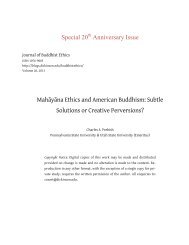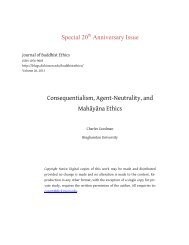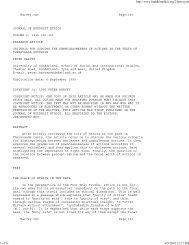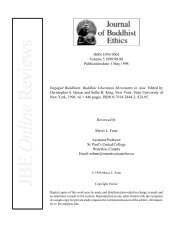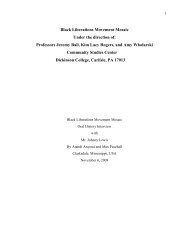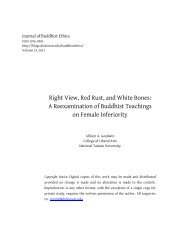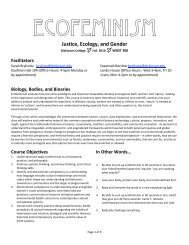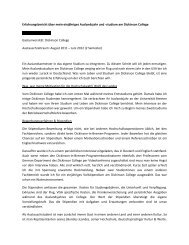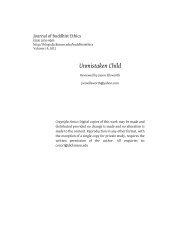Read article - Dickinson Blogs
Read article - Dickinson Blogs
Read article - Dickinson Blogs
Create successful ePaper yourself
Turn your PDF publications into a flip-book with our unique Google optimized e-Paper software.
Barstow, Between Abstinence and Indulgence 80<br />
nary people to stop hunting. In doing so, he often used the threat of hell as<br />
motivation, bluntly telling one group of villagers, “To pursue innocent<br />
deer and destroy beehives is to create the causes for birth in hell” (Autobi-<br />
ography 282). 9 Moreover, as in his letter to the king of Degé, Jigmé<br />
Lingpa holds up the promise of positive karma for those who save ani-<br />
mals. By doing so, Jigmé Lingpa connects concern with animal welfare<br />
with larger Buddhist ethical frameworks, establishing it as an important<br />
aspect of an individual’s conduct.<br />
Jigmé Lingpa did not, however, limit himself to encouraging oth-<br />
ers to practice compassion towards animals. His autobiography recounts<br />
numerous episodes during which he ransomed (tshe thar) the lives of ani-<br />
mals himself. This practice involves purchasing animals destined for<br />
slaughter, marking them to show that they have been ransomed, and then<br />
releasing them into the wild, where their special markings will prevent<br />
them from being captured and slaughtered by others. From 1758 through<br />
1769, Jigmé Lingpa systematically engaged in this practice, paying for the<br />
release of sheep, fish and rabbits on an annual basis (Autobiography 164).<br />
On other occasions, he ransomed animals less systematically, saving five<br />
sheep in 1775, for example, and a hundred more in 1780 (Autobiography<br />
262, 309).<br />
Once, Jigmé Lingpa even purchased the entirety of Wagom Moun-<br />
tain (wa gom ri) in order to seal it (ri rgya), legally preventing local vil-<br />
lagers from killing bees for their honey (Autobiography 395). The practice<br />
of sealing mountains against hunting in this manner has a long history in<br />
Tibet. In examining this phenomenon, the anthropologist Toni Huber has<br />
noted that those who seal mountains against hunting are acting on a varie-<br />
ty of motivations beyond mere concern for the hunted animals. As noted<br />
above, freeing animals is seen as a way of generating positive karma and<br />
eventually a positive rebirth. At the same time, rulers may also have hoped<br />
9 nyes med kyi ri dwags ‘ded pa/ sbrang tshang ‘rdi’ nas dmyal ba’i rgyu bsgrubs/



